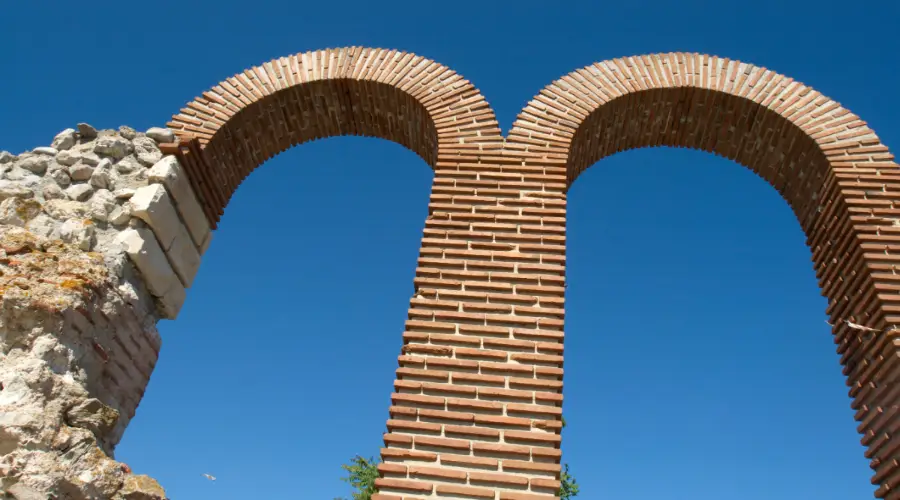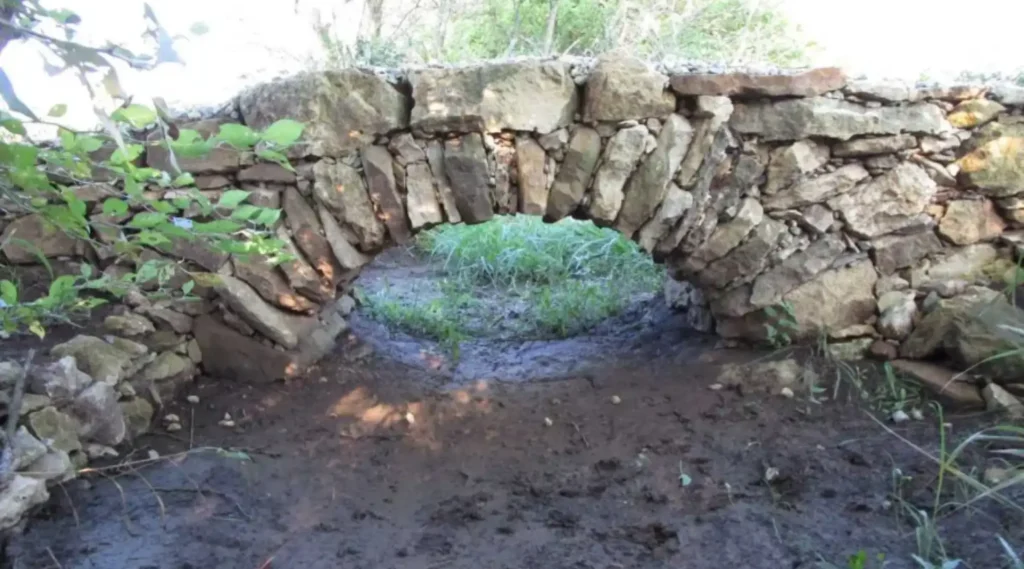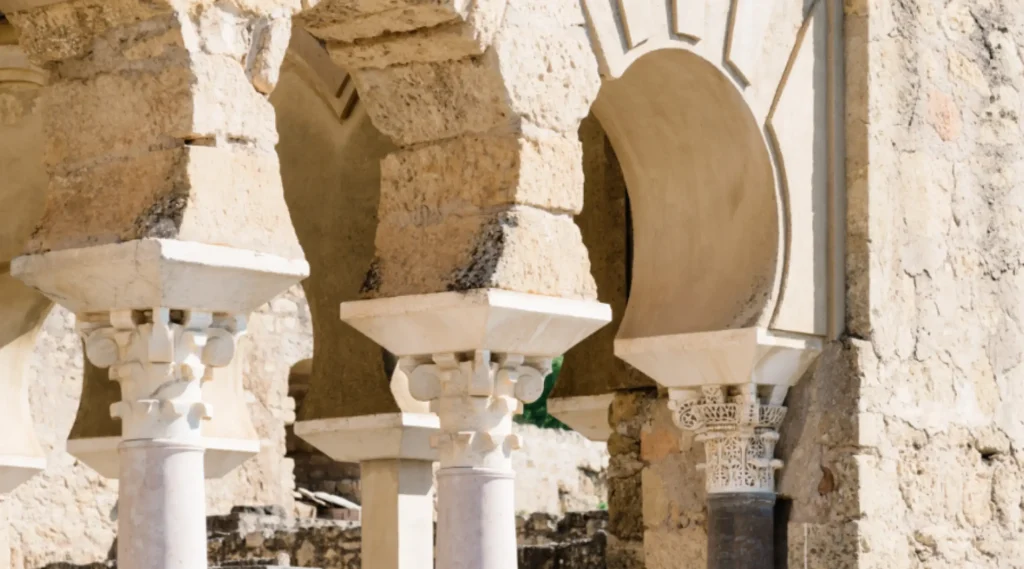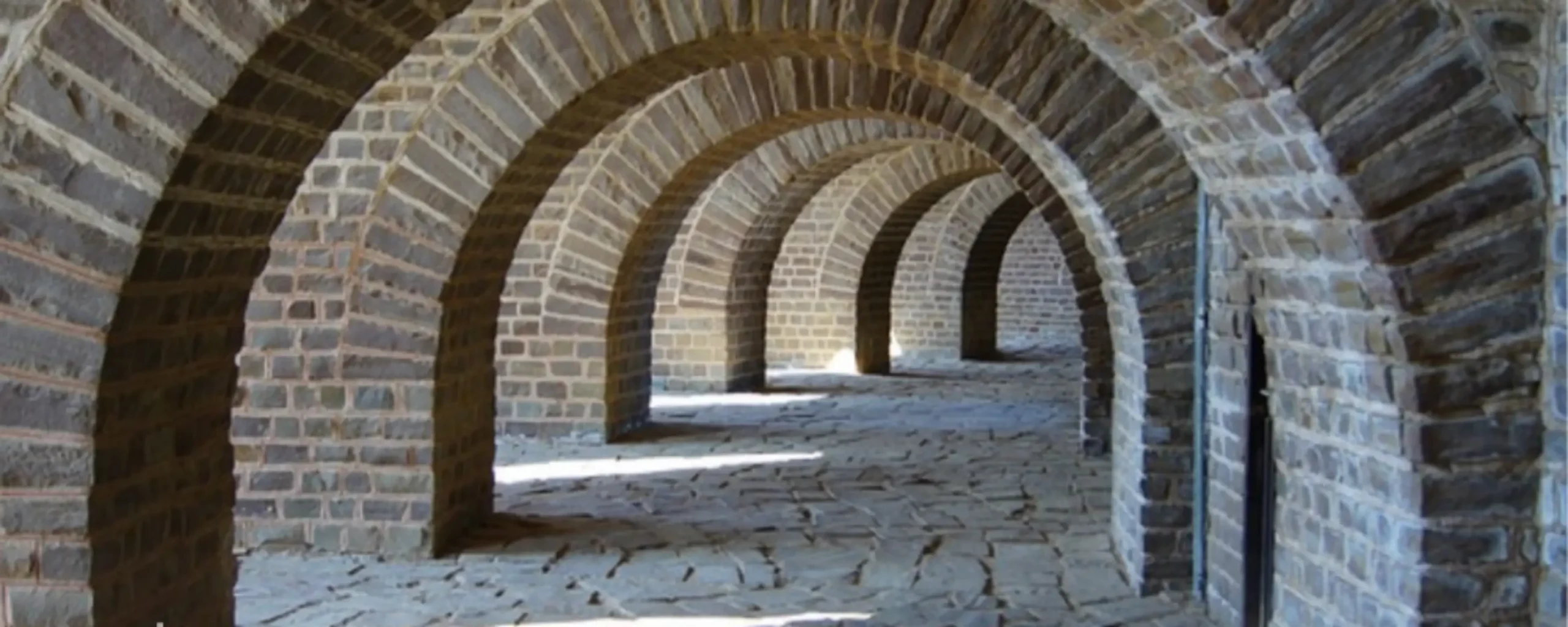Arches have been used in construction for hundreds of years for architectural purposes. There are numerous types of arches used in the construction industry. However, the most common arch type that has been widely preferred across years is rounded arches. Here we look at what rounded arches are and everything you need to know about it.
Overview of Round Arch
A round arch is a curved architectural structure which may or may not support the weight above it and commonly spans over curved openings. It is one of the oldest and most widely used arch types, and was majorly used in ancient Roman architecture, where it is believed to have been invented. The smooth surface of the arch not only provides an elegant look, but also helps transfer the overlying weight to the surrounding supports.
Components of a Round Arch
- Keystone: It is the centre stone at the apex of the arch, locking all the other voussoirs bearing significant structural load.
- Voussoirs: It is the wedge-shaped building material (stones or bricks) that forms the shape of the arch in masonry arches. These voussoirs are carefully cut and placed together to fit the curved shape perfectly.
- Springline: It is an imaginary horizontal line aligned on top of the abutments above which the arch arises.
- Spandrel: The triangular space between the curvy arch and the surrounding structures which is often filled with masonry works.
- Intrados: It is the inner concave surface of the arch that forms the inner face of the arch.
- Extrados: The outer convex surface of the arch which defines the arch’s curve.
- Abutments: Abutments or piers are part of the wall where the arch rests. They are also called springing points.
- Crown: It is the highest point of the arch, located at the top centre below the keystone. This is where two sides of the arch meet, and the curve is more visible.
Types of Round Arch
Semicircular Arch

As the name suggests, the arch curve looks like a semicircle. The thrust transferred to the abutment is in the vertical direction, as the skewback is horizontal. In this arch, the centre lies exactly on the springing line.
Segmental Arch

A segmented arch is one of the most commonly used arches. It consists of a curve that forms one segment of a circle. These arches can resist thrust and are among the most durable. In this arch, the centre lies below the springing line, where the thrust is transferred in an inclined direction to the abutments.
Horseshoe Arch

As the name suggests, the horseshoe arch is in the shape and structure of a horseshoe. It has a unique extended curve structure that extends beyond the semicircle. The horseshoe arch has high architectural and cultural significance and is widely used for doorways and windows in Islamic architecture.
Advantages of Using Round Arches
- Round arches are highly efficient in distributing the overlying compressive loads. They support the structure by transferring load to the supports on either side.
- Round arches are highly durable and can last for hundreds of years. Bridges built during ancient Roman times are still in use, hundreds of years after their construction.
- Due to its high strength, load-bearing capacity and durability, it requires minimal maintenance.
- This round arch provides a classical look that is aesthetically pleasing.
- Rounded arches are compatible with other arches to create more complex and grand structures.
- This arch does not require any intermediate supports, even for long spans.
- Due to the equal distribution of loads, this arch can withstand seismic forces effectively.
Step-by-Step Construction Process of Round Arch
Designing
The first step in building a round arch is determining its shape and size. This includes deciding the span and rise of the structure and choosing the right construction material (brick, stone, or concrete).
Preparing the Site
Ensure that the foundation is capable of holding the arch. Prepare the abutments on either end of the arch suitable to bear the lateral thrust for a stable and strong form to hold the arch above it. Mark the spring line where the arch begins to curve and mark the level to position it across the width of the arch accurately,
Build Framework & Centering
Build a temporary framework to provide the correct shape of the arch and support it while constructing. The framework should be shaped like a scaffold to support the voussoirs. Position the centring in place to align the spring line with the framework that is suitable for carrying the loads of arch stones.
Lay the Voussoirs
Place the voussoirs on both sides of the spring line, ensuring that they are aligned and level. This will form the lower part of the arch. Closely place each voussoir with mortar so that the adjacent stones distribute loads evenly.
The voussoirs should be placed towards the apex of the arch and lean slightly against the underlying stones to form a smooth and even finish. The size of the voussoir varies based on the span and rise of the arch.
Place the Keystone
After completing both sides of the arch, a keystone is placed at the apex, locking the other voussoirs in place to complete the arch structure. After placing the keystone, the arch develops the ability to withstand on its own and becomes self-supporting.
Allow for setting
After laying the arch’s components, leave the structure to set so that the stones can firmly hold together, making the arch stand stable.
Remove the Centering & Execute Finishing
After setting, remove the centering carefully without affecting the arch’s stability. Depending on the construction needs, fill the spandrels with masonry or leave them open. Ensure that the arch does not have any misalignments or gaps and forms a properly integrated structure.
Round Arch Design in Interior Design
The round arch design can be incorporated into interior design and is used for building:
- Arched doorways for smooth transition between rooms.
- Arched windows for elegant looks and to provide more natural light to the room.
- Arched ceilings provide a more visually pleasing effect on halls, living areas and dining rooms.
- Alcoves for seating and shelving add more charismatic looks to the internal space.
Conclusion
Rounded arches are a versatile component of a building and have been providing aesthetic appeal for hundreds of years. They not only give a classic look but also help distribute the overlying loads to the supports. They are a blend of elegance and effectiveness, making them one of the most preferred arch designs.
FAQs
The round arch is a perfect semicircular arch that provides a smooth surface that distributes the load outwards. On the other hand, the sides of the arch meet at a pointed apex, and the load is distributed more directly in pointed arches.
Some of the best materials for the construction of round arches are stone (limestone, sandstone, or granite), brick (clay brick or concrete brick), and concrete.
Yes, round arches can be used for small-scale buildings to construct doorways, windows, mirrors, fireplaces, and other decorative elements. The factors that need to be considered when constructing round arches are the surrounding space, materials, and creative adaptiveness.

